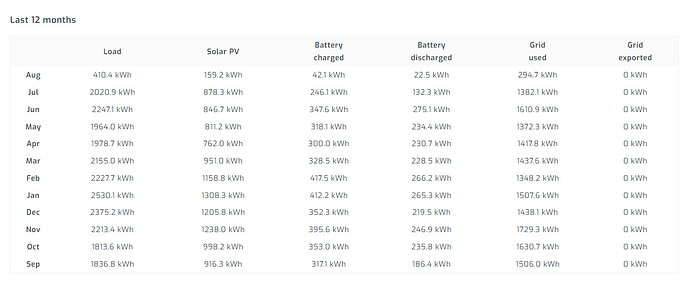Hi all,
I am busy upgrading my current system and locked on replacing with a Victron.
I have decided on Victron Quattro 15Kva, paired to the following (which are already installed to my current system):
- 33 330w Canada Solar - panels - currently connected in a series of three panels.
- 3x 10kw Narada LifePO4 batteries. (total 30kw in Dec will add another 30kw)
The application will be eventually to be as self sufficient as possible but with the understanding I will always be connected to Eskom. I want to make sure that it always fully utilizes the 33 solar panels where possible during the day for essential and non essential (geyser etc) and if additional power is needed it can blend from Eskom. Haven’t decided yet if I want to use the batteries during the no solar period as they now used for pure backup.
I have about 3 1/2 years of data on my current system which tells me the following profiles:
- Highest load (concurrent load 14kw - ACs, geyser etc etc)
- Average load during “high usage periods” (bathing kids, cooking etc) - 6kw
- Average load “quiet times” (kids in bed, just watching TV etc) - 3kw
- The average load (point 3) is high but I have a large home with lots of electronics that constantly run, and some critical equipment that has to be on 24/7.
As above my 30kw battery bank was designed to get me from sunset to sun up incase of a significant outage (stolen cables, substation issues you know stuff that happens all the time here in ZA) @ a load of 2-2.5kw.
I am a geek by nature so would want as much of the technology as possible (the screen of course) but also the app connection and as much monitoring as possible.
Been doing some research and what Confuses me is all the bits and bobs you need over and above just the inverter. Thought I would ask here what would be recommended to add to the inverter for this type of system?
I have solar now with the 30kw of batteries (as per above) so this would be an upgrade on the inverter and additional equipment side.
I use Solar assist with my current system this is a snap shot. This excludes geyser stove and other non essential loads. If it provides a better view to assist.
